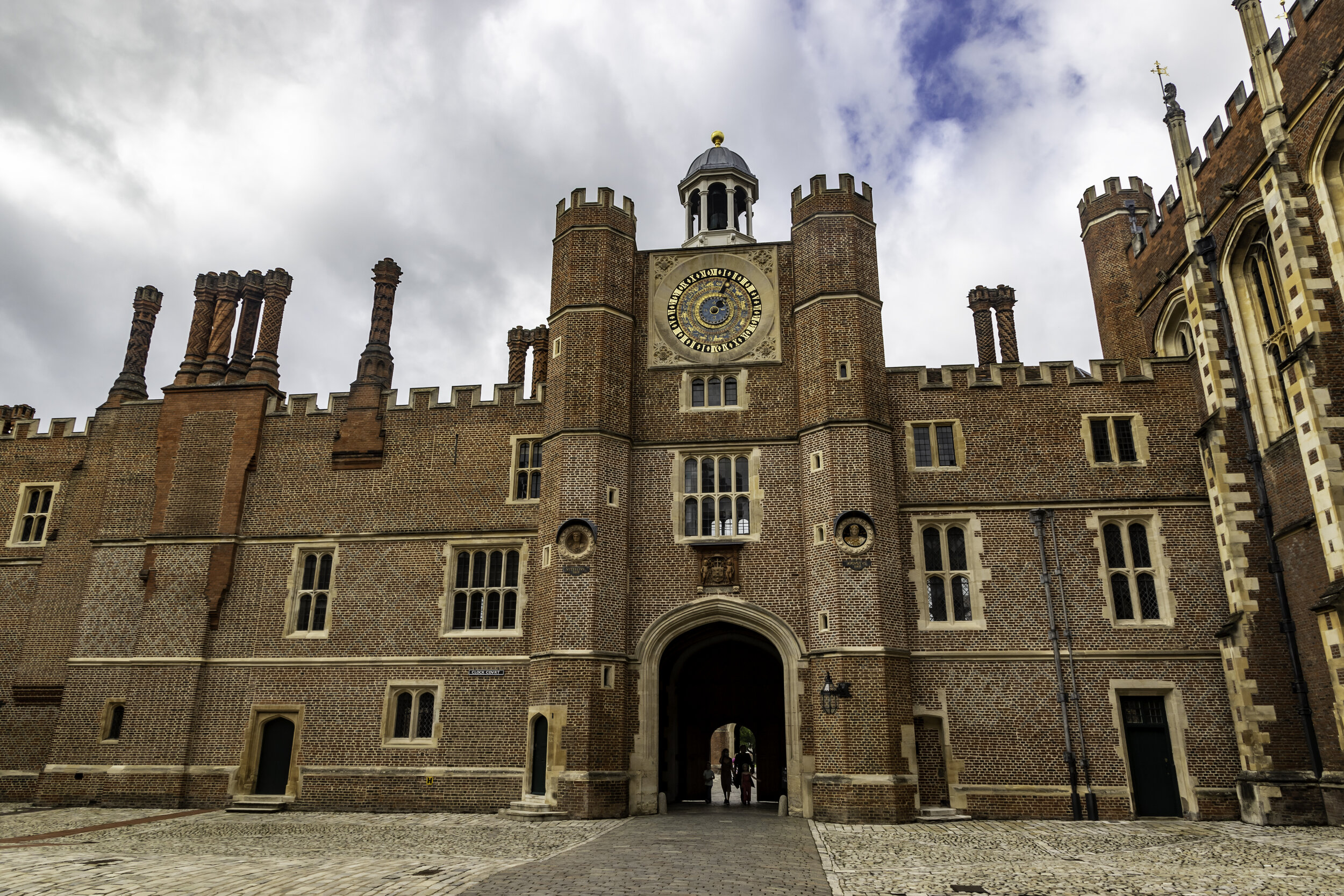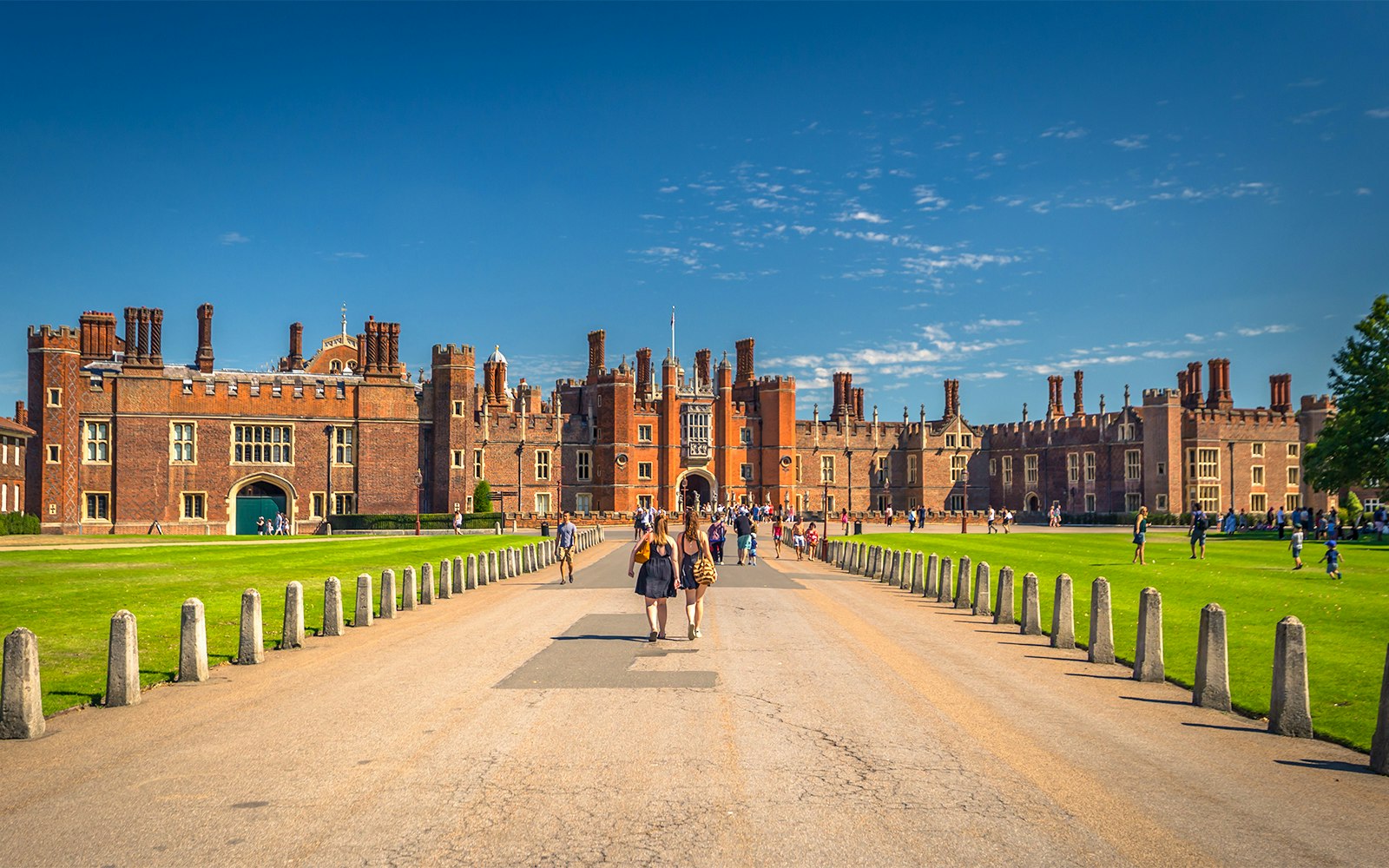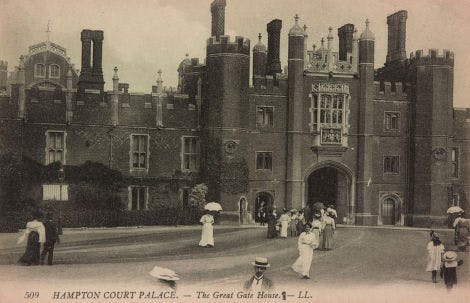Introduction
The Great Gatehouse of Hampton Court Palace stands as one of the most iconic examples of Tudor architecture, reflecting the power and ambition of England’s most famous monarch, Henry VIII. Built in 1514, this grand entrance has witnessed over five centuries of history, from royal processions to modern-day conservation efforts. Photographs taken a century apart reveal both its enduring magnificence and the subtle transformations that have preserved its legacy.

The Architectural Grandeur of the Great Gatehouse
The Great Gatehouse serves as the principal entrance to Hampton Court Palace, located in the London Borough of Richmond upon Thames. Its striking red brick façade, octagonal towers, and intricate heraldic carvings embody the grandeur of Tudor design. The gatehouse was originally commissioned by Cardinal Thomas Wolsey, Henry VIII’s chief advisor, who envisioned Hampton Court as a lavish residence befitting his status. However, when Wolsey fell from favor, the palace was seized by Henry VIII in 1529 and further expanded to reflect his royal power.
One of the most striking features of the Great Gatehouse is the large oriel window that once overlooked the palace’s inner courtyard, providing the king with a view of his visitors. Above the entrance, the coat of arms of Henry VIII and Anne Boleyn can still be seen, a reminder of their ill-fated marriage.
A Century in Contrast: The Changing Face of the Gatehouse
Historical photographs taken approximately a century apart provide a fascinating insight into how the Great Gatehouse has evolved over time. While its overall structure has remained largely unchanged, careful conservation efforts have ensured that its intricate brickwork, stone detailing, and wooden doors withstand the test of time.

Notably, early photographs show the impact of natural weathering and pollution, which darkened the red brick exterior. Recent restoration efforts have helped preserve its original splendor, highlighting the delicate balance between historical authenticity and modern conservation techniques.
The Role of the Great Gatehouse in Royal and Public History
For centuries, the Great Gatehouse has served as the ceremonial threshold to Hampton Court Palace. During Henry VIII’s reign, it witnessed the arrival of foreign dignitaries, courtiers, and ambassadors. It also stood as a silent observer to the fates of Henry’s six wives, several of whom walked through its doors to meet vastly different destinies.

Beyond its Tudor legacy, the gatehouse has played a significant role in subsequent centuries. Under King William III in the late 17th century, Hampton Court underwent Baroque renovations, yet the Tudor gatehouse remained untouched, a symbol of the past within an evolving palace. Today, it continues to welcome visitors from around the world, allowing them to step into a space that has remained central to British history for over 500 years.
Conclusion
The Great Gatehouse of Hampton Court Palace stands as a lasting monument to Tudor craftsmanship, royal ambition, and historical continuity. While subtle changes over the past century reflect the impact of time, conservation efforts have ensured that this architectural masterpiece remains an enduring symbol of England’s rich heritage. Whether viewed in person or through the lens of history, the gatehouse remains a gateway not just to a palace, but to the stories of power, intrigue, and grandeur that shaped a nation.


